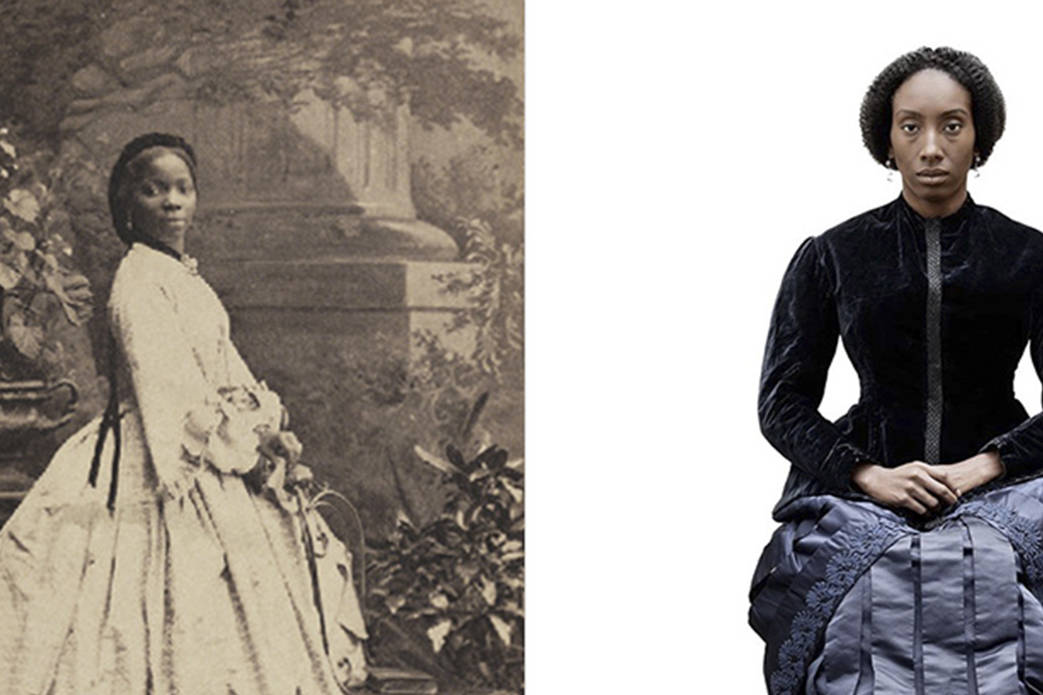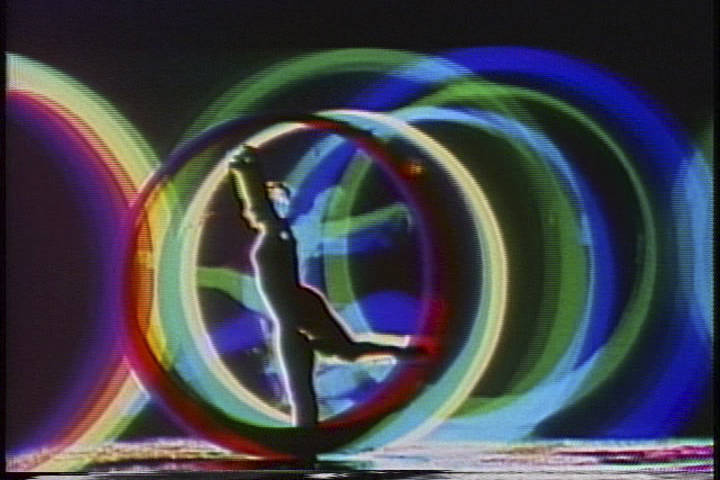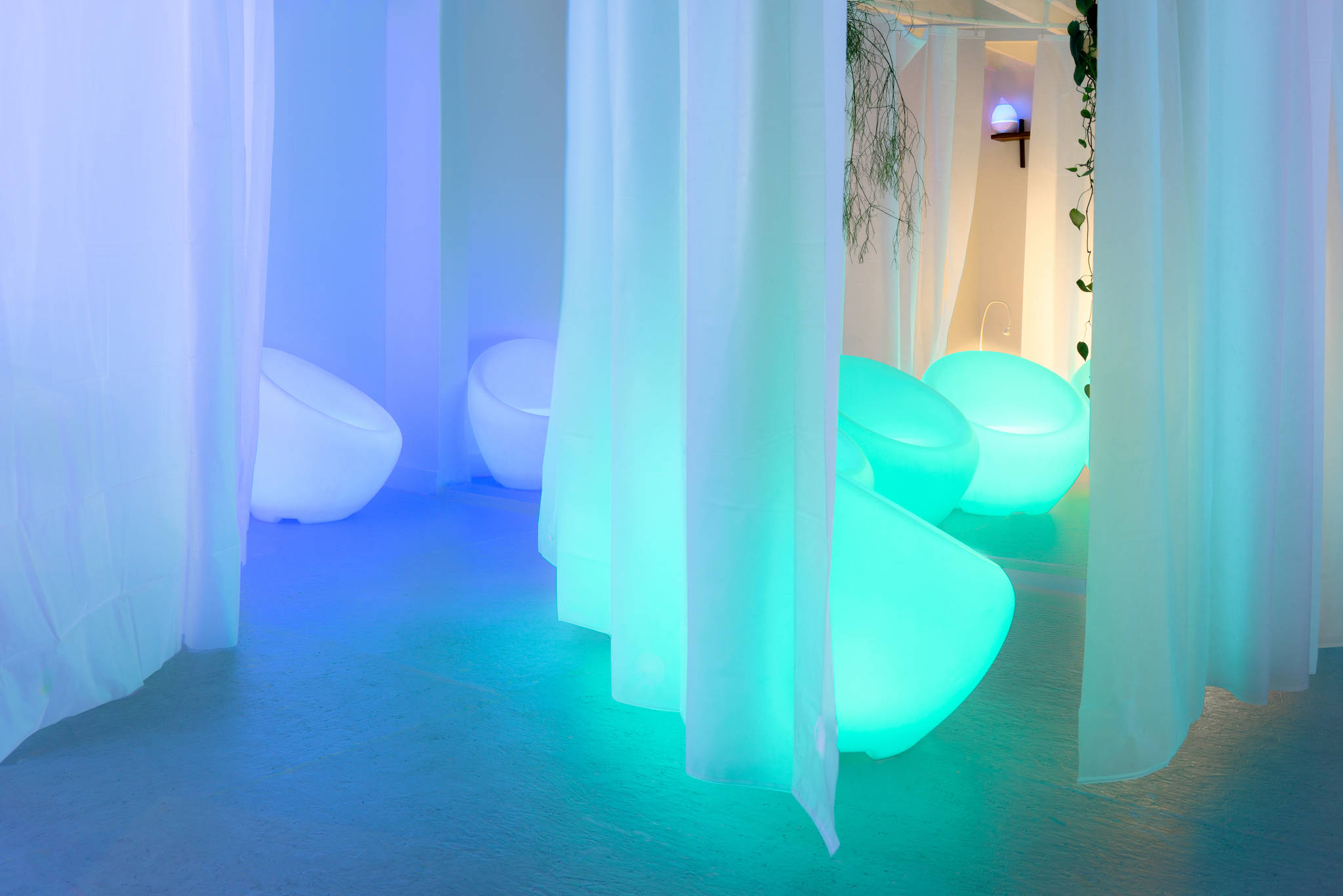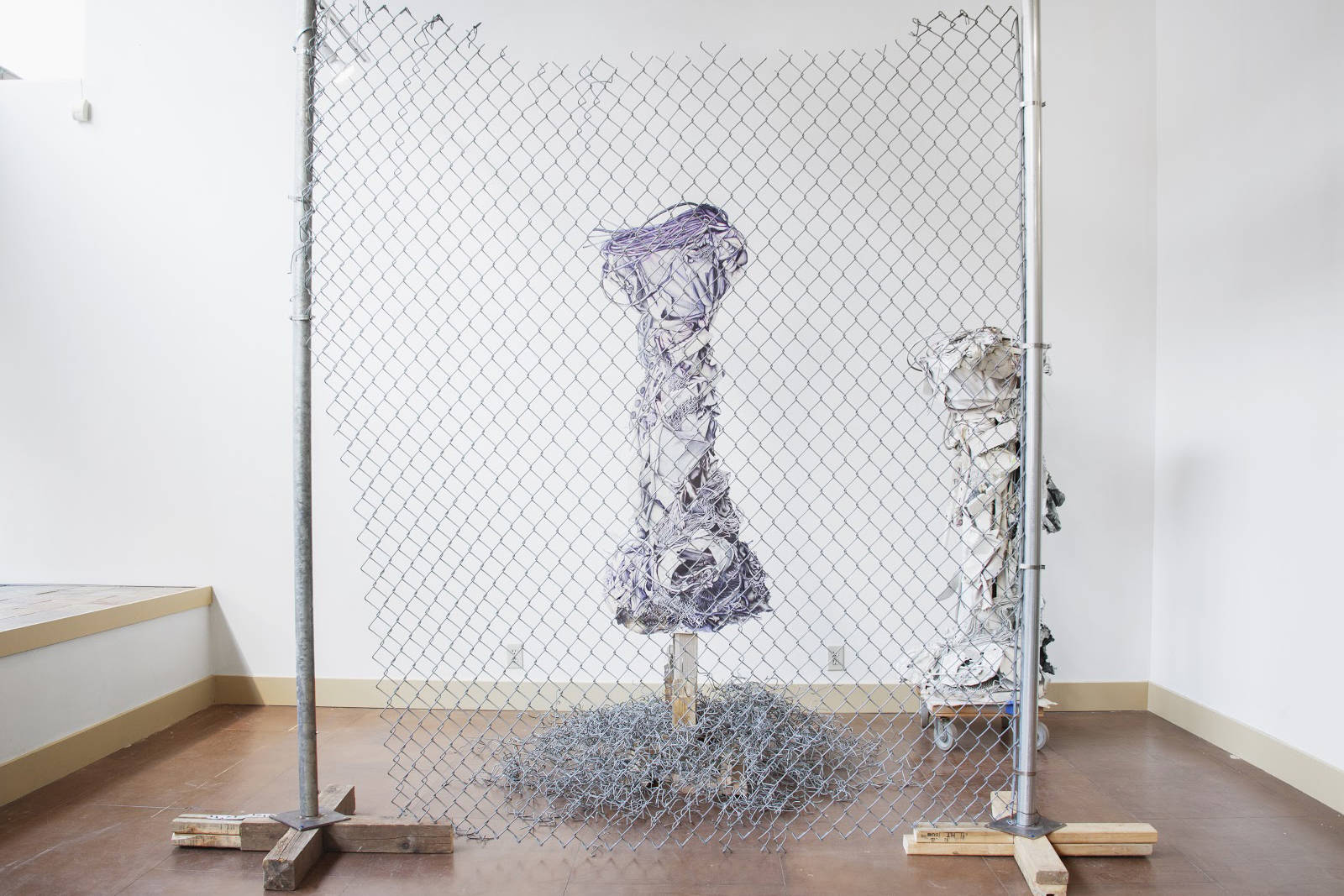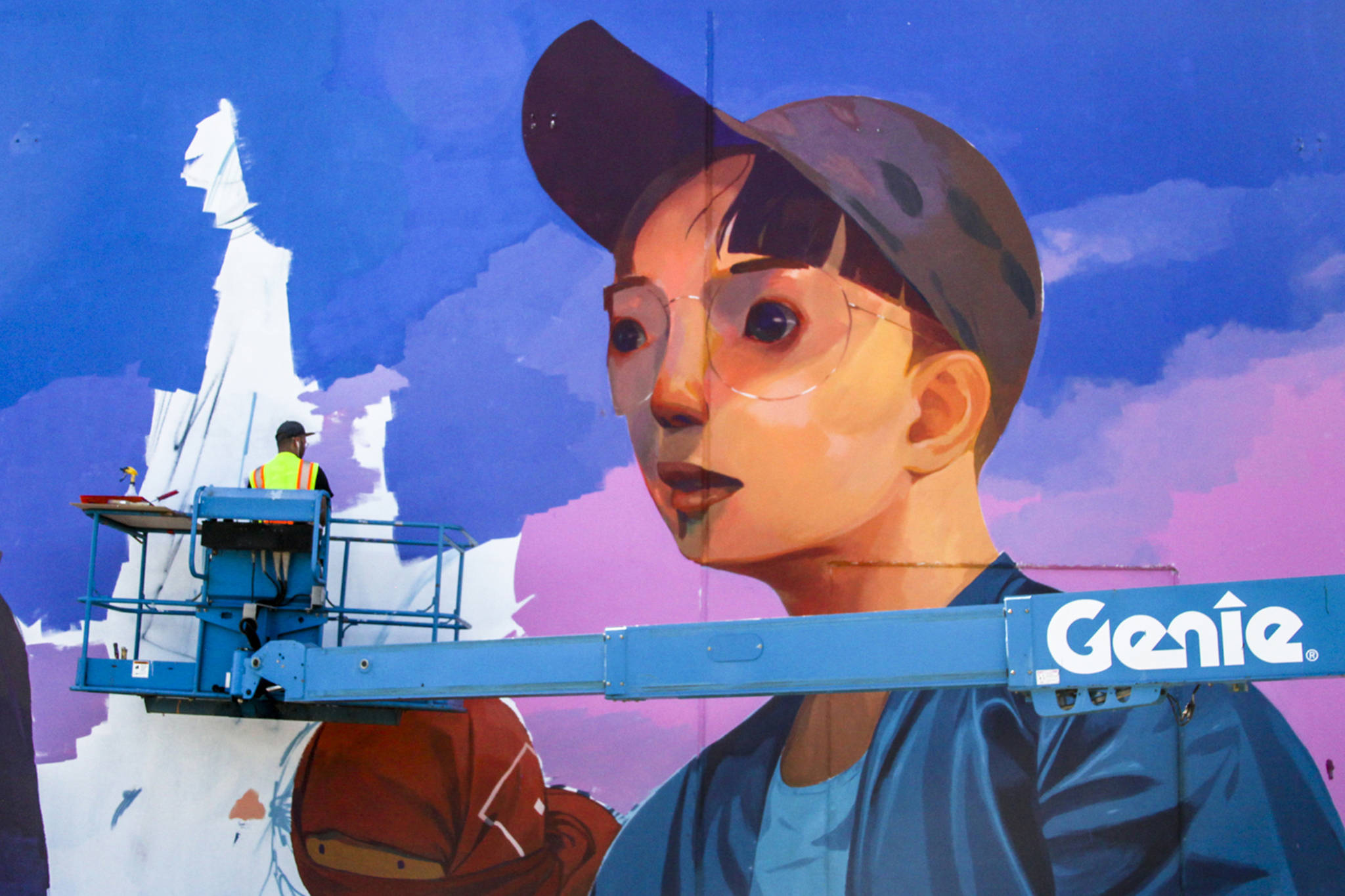“The hunger for photographs of people in pain is almost the same as the hunger of them naked,” artist Ayana V Jackson coolly stated in a 2013 video interview for South Africa’s Mail & Guardian. Jackson’s photography has consistently explored the mass craving for images of black and brown vulnerability. Dear Sarah, her current exhibition at Mariane Ibrahim Gallery, is a continuation of the central thesis of her oeuvre—that photography has been instrumental in the systemic oppression of darker cultures. This series of self-portraits, imagined extensions of other iconic photographs, asks us if photography can instead be re-wielded as a tool of atonement.
The “Sarah” whom Jackson addresses is Sarah Forbes Bonetta, a Nigerian Yoruba woman who was seized during a slave raid and presented as a gift to Queen Victoria in the 19th century. In a carte de visite photograph (a small albumen print) of Bonetta taken in 1862, she poses stoically in Victorian clothes. This image, one of the few records of Bonetta’s life, has smoothed her narrative into an uncomplicated life of an abiding black Victorian princess, cloaking the forceful slave raids that brought her to Queen Victoria, the chronic illnesses she developed due to Great Britain’s climate, and her subsequent forced marriage. To Jackson, images such as this demonstrate how photography can impose ways of seeing and cement falsehoods into history. As a counterweight, Jackson presents a series of vividly arresting photographs of herself as Bonetta.
Photographs are often presented as neutral pieces of information, even as supporting evidence, and it’s easy to forget that they can be as subjective and rhetorically manipulative as the written word. If every image is an imposition of a viewpoint, the imposer for most of the history of photography has been the white Western elite with access to the technology. In his book The Right to Look: A Counterhistory of Visuality, Nicholas Mirzoeff claims that photography, as an extension of the culture of visuality, has played a central role in the legitimization of modes of subordination, such as plantation slavery and imperialism. Through images of non-Western cultures taken by Western photographers to convey difference (the contemporary version of which Jackson calls “poverty pornography”), sociological photography has and continues to legitimize logics of cruelty, such as spatial separation by racial classification and the binarity of primitive/civilized. “We need to have certain ideas rooted out of the collective consciousness,” Jackson states in Mail & Guardian, “and in this case I’m looking at photography’s role in how that happened.”
It makes sense that Jackson also has a background in sociology. In Dear Sarah, her portraitures appear as ethnographic revisions engaged in the work of historical redress. As Sarah Forbes Bonetta, Jackson appears ethereal, almost floating, lifted by a force undetected by the camera. The poses too exude a buoyancy, her arms clasped behind her back like a pair of clipped wings, her foot lifted in eternal mid-twirl. I see the stark brightness of the photographs and I think of the ways film photography was originally developed for white skin tones, making people of color look washed-out in bright exposures, and Jackson’s embrace of light seems like an additional layer of defiance.
Perhaps Jackson’s portraits belong to a genre Mirzoeff calls countervisuality, the act of seizing control of the rhetoric of images from the dominant power. Think of Kehinde Wiley’s reimaginings of Old Master paintings as opulent portraits of black people in heroic poses, or the rise of what photography critic Teju Cole calls the “superhero photographs of the Black Lives Matter movement” that circulate on social media to communicate a collective desire for resistance. Countervisuality is an engaging idea, especially now, when the access to photographic documentation is widespread via phones and computers. It’s an effort to claim a visual initiative, of the present and the past.
“It’s visual activism.” Jackson states in AnOther Mag. “It’s using photography to fight photography.”
Dear Sarah, Mariane Ibrahim Gallery, 608 Second Ave., marianeibrahim.com. Free. All ages. Ends May 20. visualarts@seattleweekly.com
